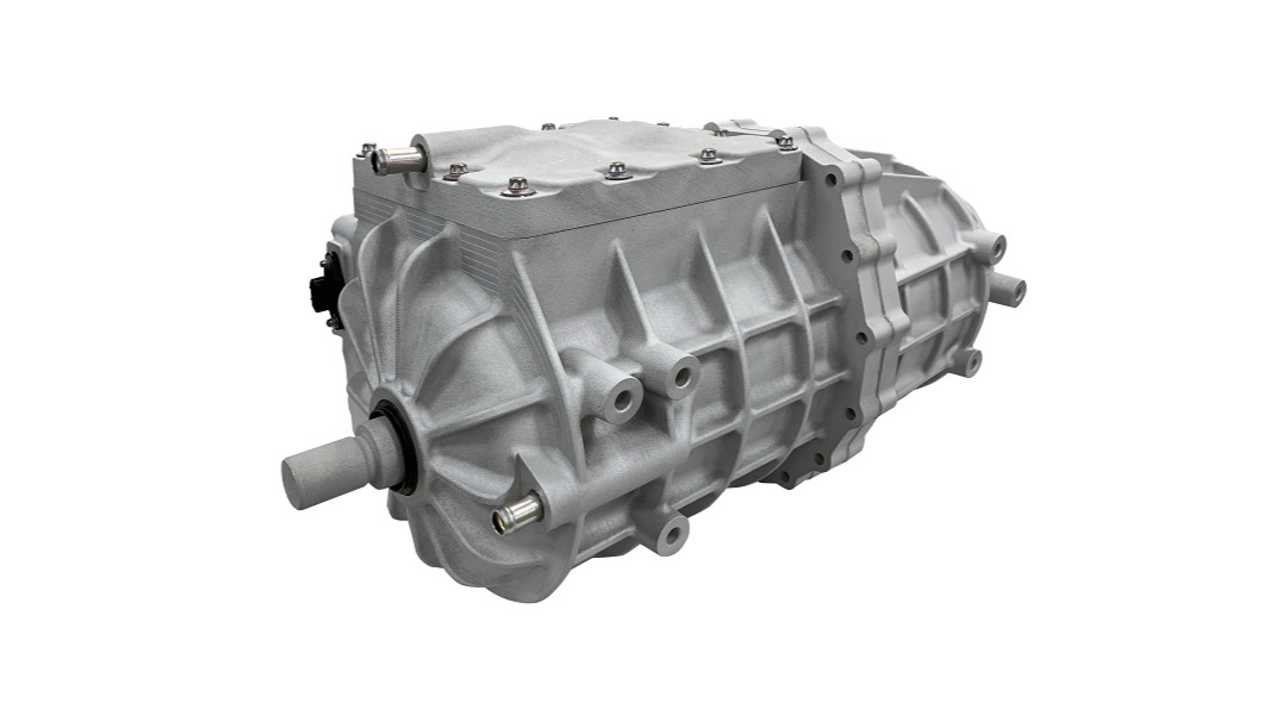Nidec just unveiled two more traction motor systems: the 200 kW Ni200Ex and 50 kW Ni50Ex, based on the company’s original 150 kW E-Axle (fully integrated traction motor system with electric motor, reduction gearbox and inverter).
The Ni200Ex (shown above) is envisioned for the D and E segments (large family cars and full-size/executive cars). It has some 30% more power than Ni150Ex, but the weight actually increased by only 9% from 87 kg to 95 kg. Series production of this model will start in 2023.
“The new 200 kW E-Axle, targeting luxury electric vehicles for the European and Chinese markets, features a motor and gears that have been improved to increase the power of the system by more than 30% while the total weight, 95 kg, is only 9% higher than that of the 87 kg 150 kW model.”
The coaxial Ni50Ex (image below) is for the A segment (micro/city / kei cars), scheduled for mass production from 2022. The key point here is to deliver power in the smallest possible package.
“The 50 kW model, on the other hand, takes aim at Japanese kei cars and similarly sized microcars for the Southeast Asian market. By adopting a coaxial design, the size has been reduced significantly (W 540 mm x H 300 mm x D 330 mm).”

Nidec Ni50Ex
According to the Japanese company, its offer can cover now 98% of all-electric passenger vehicles.
One of the biggest things that caught our attention is that Nidec already has a backlog of e-axle orders exceeding 10 million units. Those OEMs must be lining up for various types of e-axles for its further products, due to the promised attractive prices and upcoming huge manufacturing capacity.
“The company recently announced during an investor conference in Tokyo that its backlog of E-Axle orders to be fulfilled by 2025 has surpassed 10 million units.
The plan for the upcoming few years envisions new e-axle models:
- April 2019: Ni150 Ex Series (150 kW)
- 2020 (planned): Ni100 Ex Series (100 kW)
- 2021 (planned): Ni70 Ex Series (70 kW)
- 2022 (planned): Ni50 Ex Series (50 kW)
- 2023 (planned): Ni200 Ex Series (200 kW)
- 2020 (planned): Fully coupled electromechanical model
